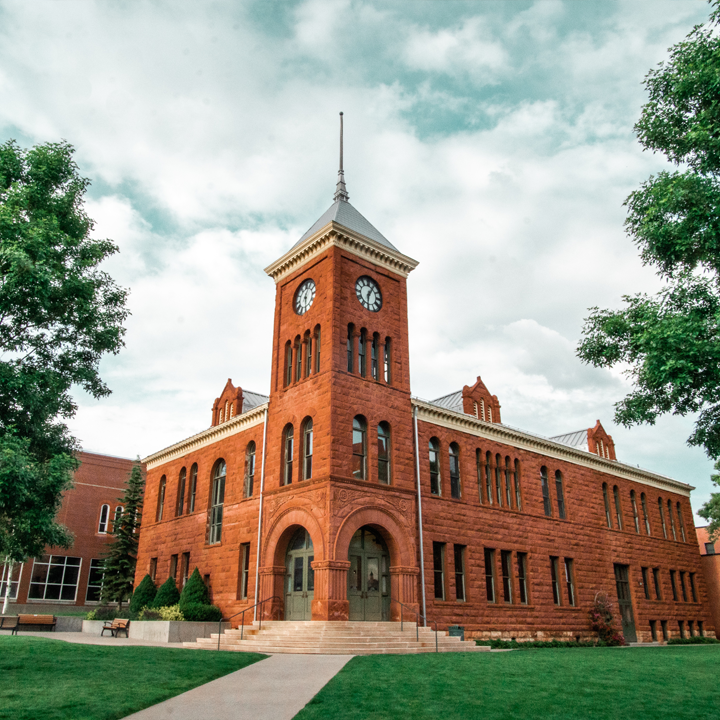
On Friday, the 28th of March, UQ Union Treasurer Tapenaga Reupena Jr (TJ) handed down his second budget to the UQ Union Council. It was passed by the council after a lengthy discussion on each budget chapter.
This is the second budget passed by the Reform political group and includes a number of pleasant surprises for all UQ students. The budget also includes a number of new initiatives and programmes run by the student executive that students should keep an eye out for.
The whole budget overview is rather lengthy. As such, I have highlighted some key elements using the ‘winners’ and ‘losers’ categorisation system to give you a concise overview of the 2025 UQ Union Budget.
Take a look through the different categories in the 2025 UQ Union Budget below and find out your wins!
Few events on campus draw more attention or funding than the Great Court O-Week Party, commonly known as the ‘Toga Party.’ In the new budget, it remains the single largest events allocation at $165,000, easily surpassing any other single spend in regards to union events.
During the council meeting, TJ noted that the party’s high cost stems from artist fees, security requirements, and the logistics of the thousands of attendees.
The event’s popularity is highly significant across Brisbane as one of the biggest and most acclaimed o-week events.
The general sentiment was that the O-Week Party benefits are student engagement, publicity for the union, and community building, making it one of the budget’s major winners as it continues to receive a significant portion of funding.
The college’s portfolio saw a drastic funding reduction from $40,000 in 2024 down to $15,000 this year.
TJ noted that the college officer was not actively engaging throughout the beginning of the year. It was mentioned that the beginning of contact between the college’s officer and TJ was only a few days prior to the release of the budget.
An attempt was made to restore the budget closer to its previous levels. A motion was raised to propose an increase of $40k again. However, the conversation grew tangled, with some members wanting to tie additional funds to mid-year reviews. Ultimately, no amendment passed that significantly reversed the initial cut.
That leaves the college’s budget in a distinctly losing position, at least for now.
The budget allocation for First Nations students represented primarily through Goorie Berrimpa rose from $44,000 in 2024 to $50,000 this year.
This is noteworthy given the overall push to trim or consolidate some areas of spending in the budget this year. The union is showing that they are focused on building First Nations community.
The Goorie Berrimpa office bearer highlighted that First Nations events have grown in attendance and impact, with weekly meet-ups and community-building activities. These gatherings encourage students to share experiences, celebrate cultural heritage, and offer peer support.
The council’s backing for this budget line suggests that representation and support for First Nations students remain a priority, making them clear winners in the 2025 budget.
Medical students emerged as another group benefiting from a substantial boost. Their budget leapt from $13,000 to $37,000, reflecting what officers had described as “big plans” to support the needs of a large, dispersed cohort.
From the council discussion, it was clear that medical students often undertake community-based initiatives, such as volunteering in schools (via the Ashintosh Foundation) or participating in rural placement.
Some council members questioned whether Union funds should go to programs not strictly affiliated with the Union, specifically the Ashintosh Foundation. The prevailing argument, however, was that medical students have a unique set of demands and often operate in multiple campuses around Queensland and that the Medical officer.
The increased funding was justified by their range of projects and the extensive engagement required. In short, Medical Students are firmly in the “winners” column thanks to this sizable bump.
The Semper Floreat, the student publication, also scored a significant budget increase from $22,000 to $41,000. Hurray!!
TJ noted the paper’s cultural and historical importance some described it as a “physical memento” of campus life that fosters student journalism and creativity.
Chief editor Jester stated that the editorial team plans to continue both printed editions and digital releases, featuring blog posts and PDFs of every issue.
When asked about print copies versus online distribution, Jester stated that the team was still fine-tuning how many issues to produce but can foresee a strong interest in special editions and launch events. The aim is to expand Semper Floreat into a broader multimedia platform, giving more contributors particularly those from underrepresented backgrounds a chance to be published and recognized.
With nearly double the budget, the publication is clearly a big winner and has a clear path to grow its presence next year.
Although some individual areas saw funding increases, the overall budget presents challenges. Official figures show a deficit of $97,711 after depreciation, however the Union claims a surplus of $159,342 before depreciation.
There’s also the reality of mounting costs of electricity up by 20% and a new $150,000 maintenance fee from the university that was formerly waived.
For context, 2024 ended with a $799,158 deficit, exacerbated by $1,446,943 in losses on the Union’s corporate side.
While the Union leadership says it wants to grow cash reserves (and cites a $2.8 million opening balance), critics from various council factions worry about bridging the difference between projected surpluses “on paper” and the actual deficits once depreciation, overheads, and unexpected fees are calculated.
These disputes led to tense exchanges, as some councillors pushed for more precise figures and accountability.
Ultimately, the budget passed but not without pointed questions about sustainability. When it comes to the bigger financial picture, the bottom line is still on shakier ground.
The Academic budget dipped slightly from $104,000 to $100,000, suggesting a generally “neutral” outcome for academic programs purely in terms of funding.
Several councillors voiced their support for the Academic Advocacy Network’s (AAN) mission to help students navigate academic appeals and rights issues, especially when facing difficulties with university administration.
Additionally, new regulations officially adding the AAN to the Union’s governing documents mark a significant step forward for accountability.
By formalising its role within the regulations it means that the AAN will be a required responsibility of the Adacemic portfolio in years to come.
Critics questioned whether the AAN might overlap with other advocacy efforts, but Lucy, the Academic Rights officer, insisted that protecting students academically is crucial.
Despite the slight decrease, the AAN’s institutional backing has been increasingly cemented, leaving academic advocacy on stable financial ground.
The Women’s Budget received a modest boost from $65,000 to $70,000. While the funding increase isn’t massive, it underlines a continued commitment to running advocacy and community-building events for women at UQ.
A standout example was explained by the women’s officer, Alyssa, which is the annual gender pay gap bake sale. The cost of ingredients is covered by the Union, and all profits go to women’s rights organisations. In previous years the profits went to “Share the Dignity” a group that assists in stopping period poverty by providing free period products.
The additional budget will allow for more activities throughout the year, from workshops and leadership programs to intersectional events connecting the Women’s Collective with other campus groups.
Overall, the small but meaningful funding jump reinforces the Union’s aim of building a supportive environment for women on campus.
Herston campus secured a notable uptick in its allocation, rising from $23,000 to $60,000.
One of the flagship programs within this budget is the expanded “midday munchies,” serving quick, free meals to Herston-based students twice a week.
As TJ noted, Herston lacks the same abundance of food options found at St Lucia, so subsidised meals address a real need. According to campus representatives, this was the most consistent feedback from Herston students: they wanted more affordable on-site meal services.
Despite scepticism from Together (LNP) councillors about cost comparisons to St Lucia’s morning marmalade, the Union defended the higher per-student expense, arguing it is necessary to keep students at a satellite campus engaged and to sustain a small but growing community.
Additionally, morning marmalade has a lower cost per student because the breakfast options are lower cost, including bread, spreads, milk, milo and pancakes. Alternatively, midday munchies are a higher per-item cost due to the fact that the food served is meant to be a more lunch-suitable option.
The Clubs & Societies (C&S) budget shows a slight increase from $498,000 in 2024 to $525,000 in 2025, enough to keep pace with inflation and modest program growth but not so large as to get too excited.
Debates in the council arose over whether to channel more funds into membership grants versus professional development for club executives.
Together (LNP) argued that membership grants directly benefit more students, Reform pointed out that training and collaboration can strengthen clubs over the long run.
Ultimately, attempts to slash professional development and shift those dollars into membership support failed.
The council recognised that clubs rely on skill-sharing and consistent executive handovers to ensure smooth operations year to year.
Although some called for bigger membership subsidies, the majority view was that existing grants go unclaimed by many clubs, so funnelling more money there would not make sense without a clear plan for better uptake.
Ultimately, C&S ended up in roughly the same financial shape as before, hence a “neutral” designation in the budget process.
Views: 203










